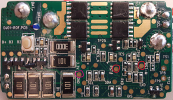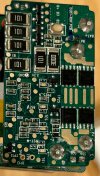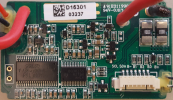- Joined
- May 7, 2025
- Messages
- 17
- Reaction score
- 0
- Age
- 27
Hello everyone,
I'm having an issue with one of my batteries for my Phantom 3 Standard. For some context, I have 3 batteries, however I think I must've let them sit for too long as two of them experienced power failure after the individual cells dropped too low in voltage. To make a long story short, I opened up the batteries, removed the old cells, spot welded in new ones, and used the Battery Killer software to clear the power failure flag. After closing them back up, one of the batteries gives me a Battery Error message in the app accompanied by a motor overload message. The other battery seems to work just fine. I honestly can't figure out what the issue might be as from what I've seem, this issue is normally caused by something being wrong with the communication pins in the battery compartment, but since two of my batteries work just fine, I would think that's not the issue. Does anyone have any idea what the issue may be? I'm attaching some screenshots from the app to show exactly what I'm seeing.
I'm having an issue with one of my batteries for my Phantom 3 Standard. For some context, I have 3 batteries, however I think I must've let them sit for too long as two of them experienced power failure after the individual cells dropped too low in voltage. To make a long story short, I opened up the batteries, removed the old cells, spot welded in new ones, and used the Battery Killer software to clear the power failure flag. After closing them back up, one of the batteries gives me a Battery Error message in the app accompanied by a motor overload message. The other battery seems to work just fine. I honestly can't figure out what the issue might be as from what I've seem, this issue is normally caused by something being wrong with the communication pins in the battery compartment, but since two of my batteries work just fine, I would think that's not the issue. Does anyone have any idea what the issue may be? I'm attaching some screenshots from the app to show exactly what I'm seeing.











